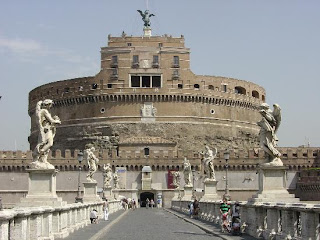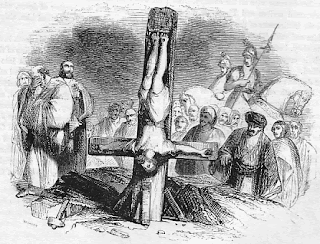My objective is to make a small contribution to the discussion for successful methods, lessons, and training courses to best equip administrators, educators, and and teachers with the proper tools and skills tailored specifically for the academic success of their Roma students. The progress of these tools and preparatory lessons could potentially ensure the scholastic breakthroughs within the Roma community, and, therefore, help facilitate the integration process.
It was important for me to acquire the necessary information in order to gain a broader understanding of several different perspectives, and to properly address issues pertaining to Roma kids in Italian society. Therefore, I formulated a few specific questions to interview several teachers and other former guest lecturers as to that they personally think are preventing successful integration among Roma youth.
The following is an example of the questions and the responses I received based from the interviews I conducted: These particular responses are from a male 4th grade teacher from Iqbal Masih who has several decades of experience teaching Roma pupils.
Q. How do you feel the needs of the of the Roma children are met in the Italian public school system today?
A. I can tell you this: The needs of the Roma children in the Italian school system are addressed the same way we Italians address the needs of their parents and relatives. [What] I mean [is], Roma people are not at all integrated in Italian society, nor are they improving their relations with our language, work opportunities, etc. In my opinion, [the] Italian school system can't really have a positive impact until some kind of REAL integration starts improving.
Q. In your point of view, how are the Roma children/students perceived amongst native Italians? For example, are they perceived specifically as ''special needs''? If so, why do you think that is??
A. [Based] on my thirty years [of] teaching experience, Roma children are still really perceived as ''special needs'' from native Italians, both young and old. But, because they ARE special needs in learning areas based on the written language, such as our school. I mean, 95% of Roma pupils still come from parents that can't read or write any language, [including] Italian.
Q. What are your personal opinions as to why these kids are faced with so many challenges?
A. All the Roma children in my classrooms in the past thirty years have been showing deep difficulties in all teaching [and] learning areas. Again, I think the main problems are connected BOTH with the Roma way of living (very very different from our usual standards of western societies), AND the absolute rejection of the written language by the Roma people, that makes them, as a whole, a functionally illiterate segment of our society.
Q. Lastly, do you feel that Roma children are given the opportunity to be successful in Italian schools?
A. Of course, not. I would say an absolute majority of Roma pupils leave schools without any real mastery of the basic abilities needed to improve their social status. In the end, I'd say that the real, substantial problem is not about helping Roma kids in our schools. The real problem is to work to get a REAL, SUBSTANTIAL way to start integration between Italian and Roma people.
Roma populations that are located on the outskirts of downtown Rome are steadily increasing. Many of today's Roma communities are the descendants of emigrants from the Balcan Wars (1912 - 1913 conflicts in which large ethnic populations from Bulgaria, Greece, Montenegro and Serbia emigrated to Italy). Other heavily populated Roma communities are either the descendants of, or are emigrants from, Romania, the Czech Republic, Croatia, Hungary, Turkey and several other European countries.
Furthermore, Italian societies have shown difficulties in facing integration throughout recent history. There are still many prejudices against Roma communities, and this particular ethnic group are still most commonly referred to as 'gypsies'.
Additionally, eighty percent of the inhabitants in Roma camps are illegal, and there has not been a systematically successful procedure to either expel or identify people of illegal status within Roma encampments.
Lastly, because of the diversity of regions, ethnicities, morals and beliefs among the different communities, this has led several conflicts and encampment instabilities.
The initial step that administrators and educators alike can take to bridge the gap between the Roma communities and Italian society is to understand and then work through cultural limitations and restraints.
There are many difficulties that teachers are confronted with in working through the cultural barriers of the Roma community; mainly not being a member, and therefore not being able to identify with their particular philosophy, values, and ideology.
Some Roma parents (if not all) are concerned that their children are being instilled with conflicting cultural beliefs that are entirely different and oppose their own. Moreover, only a small minority of parents actually feel that it is beneficial for their children to attend school. The resulting behaviour is usually then indifference towards that child's academic successes and struggles.
Furthermore, the majority of Roma communities are illiterate because historically their civilization best utilized the oral tradition (cultural materials & folklore being transmitted verbally from one generation down to the other through stories, songs and chants).
Therefore, it is imperative to demonstrate to Roma parents how regular school attendance and involvment are the first steps towards successful integration into Italian society.
It is also equally important to convey the additional benefits of receiving an education. Primarily being: the importance of literacy in preparation for the work force, and therefore earning competitive wages.
It is absolutely essential for all educators and administrators in the Italian public school system to acquire the necessary tools and skills specifically for their Roma pupils. The majority - if not all - Italian public schools are not equipped with the tools, nor do the teachers have the necessary training in order to address and tend to the needs of their Roma students.
Therefore, it is fundamentally imperative for Italian teachers to be professionally prepared to accommodate and educate their Roma students based on understanding the potentially problematic barriers rooted in the conflicting ideals of several different cultural backgrounds.
Likewise, it is essential for Italian teachers to receive coaching or lessons in order to successfully integrate and build trusting relationships with the parents of their Roma students.
School integration is aimed to find different approaches to properly teach and educate these children to improve the quality of their lives.
In conclusion, I have composited a few possible solutions for successful integration and Roma scholastic progress.
Firstly, equal share responsibilty between the Italian public school system and Roma communities to ensure the academic success of Roma youth.
Secondly, the incorporation of cultural training courses for all Italian public school educators and instructors. Six years ago, Marco Brazzoduro, a sociology professor at the University of La Sapienza began a project devoted to study and promote integration among Roma children. This project is necessary based on often problematic and conflicting values between the Italian and Roma cultures. One specific problem this study is attempting to comprehend and find a solution too is illiteracy. There is a profound concern among teachers in identifying the reasons why many of their Roma pupils still have many difficulties reading at the end of their primary school years (or elementary education).
Finally, their is a substantial need for Roma biographical narratives (and other minority based literature) in order to properly understand the personal hardships, experiences, and needs of the Roma people coming directly from their own, powerful, independent voices.

















































